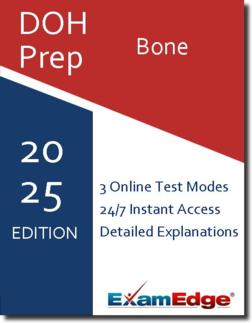DOH Bone (DOH-BONE) Practice Tests & Test Prep by Exam Edge - Topics
Based on 34 Reviews
- Real Exam Simulation: Timed questions and matching content build comfort for your DOH Bone test day.
- Instant, 24/7 Access: Web-based DOH Bone Densitometry practice exams with no software needed.
- Clear Explanations: Step-by-step answers and explanations for your DOH exam to strengthen understanding.
- Boosted Confidence: Reduces anxiety and improves test-taking skills to ace your DOH Bone Densitometry (DOH-BONE).

Understanding the exact breakdown of the DOH Bone Densitometry test will help you know what to expect and how to most effectively prepare. The DOH Bone Densitometry has multiple-choice questions The exam will be broken down into the sections below:
| DOH Bone Densitometry Exam Blueprint | ||
|---|---|---|
| Domain Name | ||
| Osteoporosis and Bone Health | ||
| Equipment Operation and Quality Control | ||
| Patient Preparation and Safety | ||
| DXA Scanning of Lumbar Spine | ||
| DXA Scanning of Forearm | ||
| DXA Scanning of Proximal Femur |


